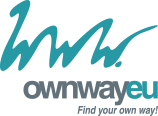There are many changes and they have to be made into the reality. Now the question is: How to make it happen quickly and cheaply while paying heed to all the contingencies? It indeed is a very demanding process, especially if the change concerns a larger team of workers or if it reaches across several departments. Here there is a need for a tool or a unitary model to tune all in one line.
A build-up of changes and the 10-minute deadline
The times we are living in can be characterized as dynamic or even chaotic. Not only we are sent an enormous quantity of requirements, but also contradictory pieces of information, decisions. They come flooding from e-mails, negotiations with customers, the Skype, the managers, the phone calls and so on. On occasions people are interested in nothing but the results. How can we possibly, working in such an environment, achieve those results without making mistakes?
Each requirement mostly looks like a banality to be dealt with in 10 minutes. Sadly, it may not be the case, even if everybody is expecting just that. More precisely put, the taskmaster is expecting the solution in 10 minutes. Faultless, of course. That can be true, if the change in question is effected the first time right. Except that it does not work like that in practice: once you have checked the task off, there is someone else coming with another idea or suggestion, and you start either explaining or adjusting. The 10-minute task will then easily last several hours. The solution can be correct, but also it has to be understood correctly by all the parties.
It is exactly here where our experience in the management of change, ability to put each change into the project´s context, the company´s system, the solution for the customer converge. No change can be effected just for the sake of it, for every change is a part of a whole. It has its place and function there, and it is interlinked with other functions. Any wrongly effected change can easily induce an error somewhere in the whole system. Only later we are going to discover that the 10-minute task has brought about rectification lasting for hours (at best). Once we ran across the situation where problems in a small gear-box were resolved by changing the material. There appeared more other problems as a result. The developers took no less than a year to discover that those other problems had been caused precisely by the material change. Or it can easily happen that a change effected in a project will alter the strategy and the customer will not get what they have approved.
Standard procedure is frequently slow
More often than not, it is nowadays the norm for the companies to have a process, a directive for the management of changes. In brief, if could include the following steps:
- File the change
- Assess and analyze the ramifications
- Take the decision on the need to effect the change
- Inform the others:
- The team members
- The interested parties
- The management
- Define the measures taken ‒ every time at least 3 variants
- Determine a plan
- Approve the plan and the best solution
- Make into the project, process, system ‒ who, what, when, for how much
- Monitor the real ramifications
- Evaluate
- Take the decision on the need for additional measures
- File the best practices
Before we have done all the above, we will lose a lot of time. In extensive changes or in branches of industry where there is a high emphasis on safety (automotive, aviation industries …) the progress gets even tougher. What if it could be done differently ‒ more easily, faster, better.

The Real | Interim Manager for Your Changes

Manager work model
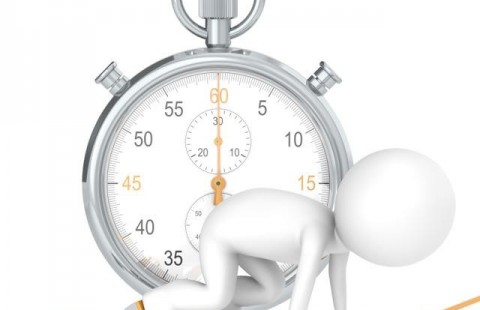
Time management - making use of time effectively
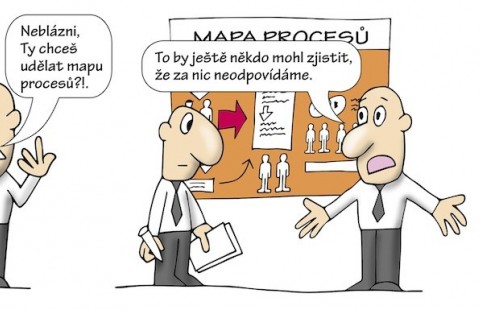
Jak správně tvořit mapu procesů

Modelling and setting the processes and procedures - ISO 9001

Training - preparation of the SWOT analysis and strategy
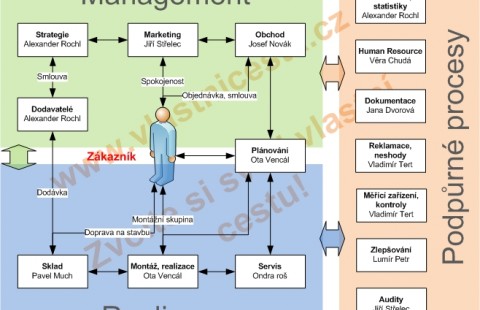
Company Management System of Quality Step by Step - ISO 9001
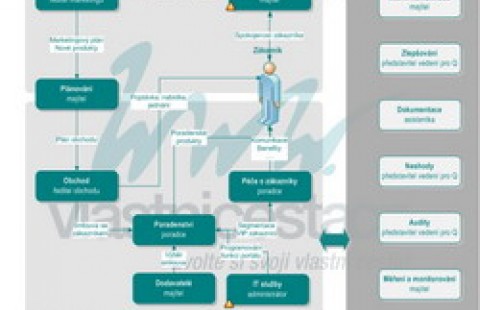
Process map acc ISO 9001 - business offer

IT staff communication
A visual model, an A4 sheet scheme
In their practice, OwnWay advisors implemented the single-page rule already a couple of years ago. Ideally it is an A4 sheet, even though we draw on A3 too with more complex projects. In our seminars or trainings of Project and team management you will find a new term ‒ a project scheme. As of today, we have met nobody to be familiar with that term.
These are hasty times and workers cannot spend time reading lengthy texts. They are supposed to perform. Moreover, with a long document, they do not remember what was at its beginning. This is the reason why multi-page directives make no sense. Nobody reads them anyway relying on what they have been told by a colleague. They read a picture or scheme faster and remember it better.
Visual models are used, for instance, in:
- defining the processes
- setting the systems
- project management
- searching for an optimal solution to long-term objectives
- setting the concept
- defining or managing the strategy
- creating internet sites
- etc.
In our photographic gallery there are several examples. They all originate in our practice, only have been made anonymous. There is one exception: the preparation of the OwnWay portal. The owners of LA TAUPE company have allowed to publish here the preparations of this portal in the making. The scheme is not complete for the project´s implementation and development are going on as this article is being written.
An example ‒ Implementation of ISO system with a small business
Here, a well-drawn process map represents an ideal example. In fact, it is a visual model of the management system. In a small business, the entire implementation rests in producing a process map on A4 sheet. All you need to do is color a complete process in the model, you have the responsible people here, you determine which processes are of the greatest importance as they need to be prepared first. If the visualization is done correctly, there is no need for the flowchart. Working the changes in is very easy.
Can you imagine the whole management system of your company is created as an interactive model of schemes, pictures and only supplementary texts? We can. See Modern ISO.
An example ‒ Development and implementation of OwnWay consultancy portal
The scheme describes the way the portal has been transformed, what steps have been planned, what LA TAUPE products used, what portion of the project has been completed (the colored part), what new benefits realized in the process and other.
Sticking to the concept – a single line
The hardest job the manager faces is to make all the participants effect the changes in line with the laid-out plan or strategy. Everything should be organized in such a manner as eliminates the need to check on each individual worker´s actions. The manager needs all the workers to be abreast of the latest developments and remember the most important parts.
Our principal motto here is: “Rather than creating piles of documentation, it is better to draw one scheme or picture.” Rather than starting to write texts we prefer to get hold of a pencil and a sheet of paper. It helps a lot in the team. Once you start drawing, everybody is following a single idea. They see where it all begins and where it is heading. It is then easy for them to add other contexts and visualize them. Every one knows exactly where they are. If they suggest another relation, link, solution, they are quick to see whether they belong to the model or not. Each new change is assessed and drawn into the visual model, so that all can see immediately whether it makes a part of the model and, also, how it could potentially be resolved or included.
It makes me wonder how much time people are able to spend discussing the best solution, how many emails they are able to send out, without having the situation and the contexts clear. It is precisely here where drawing and visualization can help quickly and effectively. All it needs is just a little practice.
Appearance beats everything else
The man is a visual creature. The supermarket chains and vendors got it right. People are too preoccupied with a product´s appearance to be seriously considering whether they really need it or not, as is being proven every day by piles of fancy-color leaflets in our mail boxes. Surely no marketing departments would be doing that, if their companies were not making money on it. The same holds true with Internet advertising and so on. So why not use the successful elements of Public Relations and marketing with the management systems, ISO, TS, AS systems too?
While looking for the solution, use a plain pencil and a paper sheet. Some do not know these any more using just a keyboard and a monitor. But creativity flows uneasily through a keyboard preventing people from expressing a momentary idea quickly and correctly. In the next stage, you need to give the scheme, solution colorful, beautiful appearance. Matching the company colors, of course, to strengthen a sense of belonging. If the workers like the scheme, they will use it more and not just read the texts. Do not be afraid to model and then pass the picture onto the graphic designer for processing.
We know from experience models make the time needed for finding the solution or process preparation shorter by 20% to 50%.
Modelling, visualization alone is not enough. You need to get the change into people´s heads. This subject is dealt with in the article called „How to get the change to the people“ on the portal of www.firemnisociolog.cz.
If you are interested in learning how to prepare visual models, the process map or how to get the change to the people, contact us.
